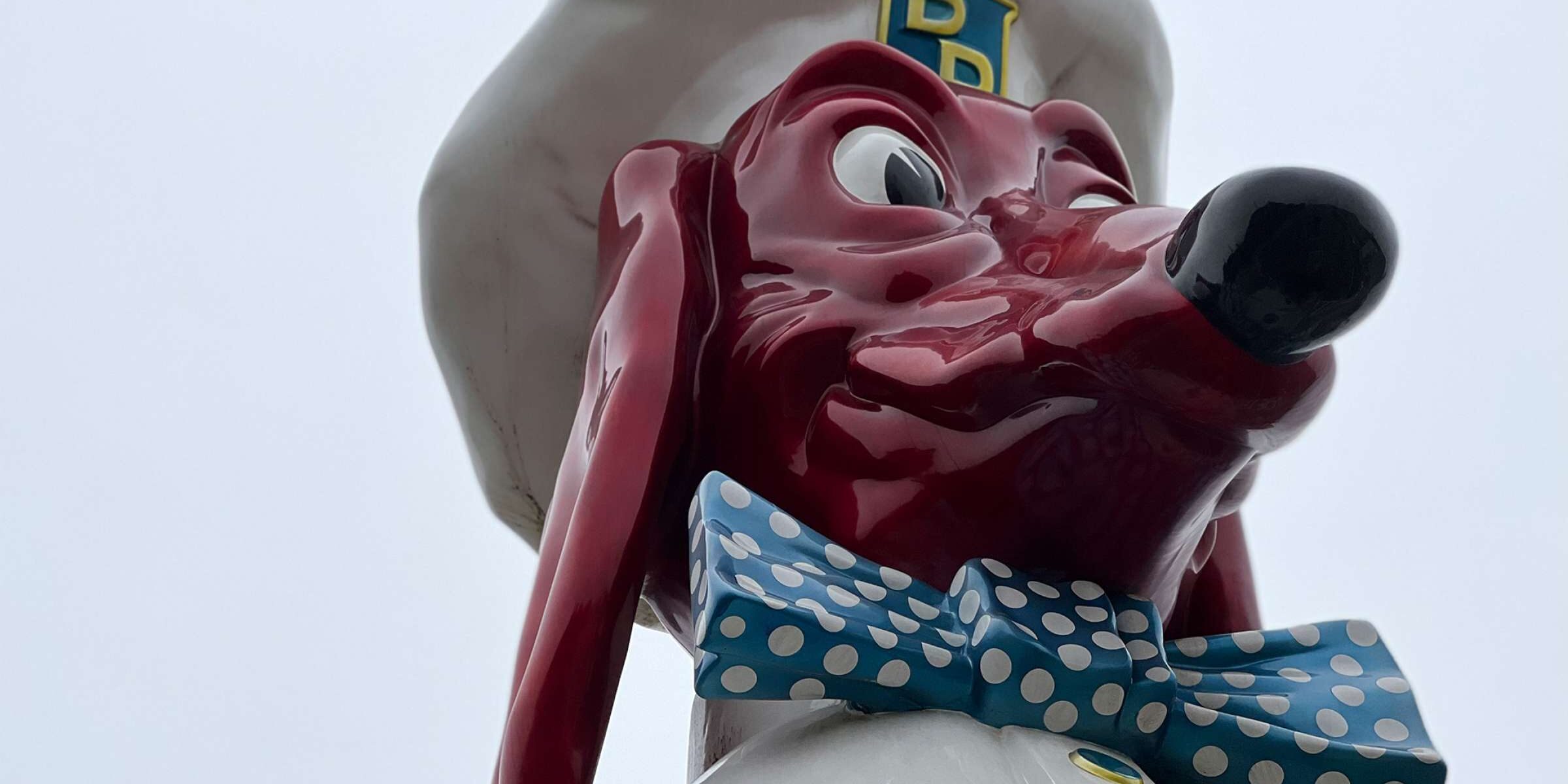Storefront history: Amman museum celebrates lost art of signage

Advertisements and store signs across the decades offer windows into the kingdom’s past at The Old Signs of Amman Museum in downtown Amman, Jordan, Jan. 25, 2022. Taylor Luck
From The Christian Science Monitor: From the flip of the calligrapher’s brushstroke to the choice of Arabic script applied to sheets of metal and glass, the works are more than advertisements; they are signs of the times.
The Old Signs of Amman Museum that showcases these works tells hundreds of stories about the Jordanian capital and its shops, residents, and society as far back as the 1940s.
But perhaps the hand-painted signs’ most captivating story is that of the skill of the khattat, or professional calligrapher, who painted them.
This duo makes sure Kansas City doesn’t lose neon landmarks like Katz and Town Topic

Ben Wine and Dave Eames of Fossil Forge in Lee’s Summit. They regularly work with The Lumi Neon Museum, a nonprofit that aims to rescue and restore historic neon signs in Kansas City. Fossil Forge
From KCUR: The iconic face of Katz Drug Store — the famed retail operation that grew from the streets of Kansas City to eventually become CVS — is set to return to its hometown thanks, in part, to a pair of unlikely neon sign restorationists.
Dave Eames and Ben Wine’s work stems from a desire to keep Kansas City’s glowing history on public display — on view for all, the duo behind Fossil Forge said.
In addition to recreating a double-sided, 10-foot Katz Drug Store logo, they recently purchased a Town Topic sign at auction, and plan to restore and display it — another icon of downtown KC that shouldn’t be lost to a private collection, they said.
The case for visiting offbeat museums and attractions

People gather in front of the Union Theatre, one of Los Angeles’s first purpose-built cinemas. (Forest Casey)
From The Washington Post: On a recent Saturday morning, my husband and I were the only visitors to the Velaslavasay Panorama in Los Angeles. Situated in the historical Union Theatre in the West Adams neighborhood, the attraction is open by appointment and affords a panoramic peek into Shenyang, China, during 1910 to 1930. Reached via spiral staircase, the 360-degree, three-dimensional terrain of painting and miniatures combined to create a breathtaking immersive experience. We sat together, watching the light change across the city. Listening to the recorded soundscape of birdsong, the distant clatter of pots and pans, a train whistle and the echo of shoes on cobblestone reminded me of other times when I had climbed sets of stairs to look out over Marrakesh, Morocco; Paris; or San Gimignano, Italy.
Patented by Irish artist Robert Barker in 1787, the panorama became a popular form of entertainment in the 19th century. It’s more than a painting on a wall. “It’s an interface,” explains Sara Velas, director of the Velaslavasay Panorama. “Because you’re using your own mind and sensibility to create the illusion, it’s then something that can live on beyond your encounter. You take an active part in making it happen.”
My visit to the panorama conjured recent journeys and also churned up memories of childhood road trips with my father, Ross Ward, creator of Tinkertown Museum in Sandia Park, N.M., which my stepmother, Carla, still owns and operates. Dad’s enthusiasms turned every drive into detours trading standard guidebook recommendations for the wonder of concrete dinosaurs, clock collections and desert puppet theaters. As the pandemic continues, small museums, roadside attractions and “art environments” present an uncrowded antidote to more mainstream offerings, and our visits can help to keep their doors open. Whether you have weeks or only a few hours, a journey off the beaten path offers an opportunity to learn new things and deepen your appreciation of the surrounding area.
Investing in downtown Phoenix’s future: The Bank of Douglas building

Arizona Bank building upon completion. The Republic
From azcentral: In the late 1950s, about the time downtown Phoenix started its decline, a young financier decided to build up the district’s financial infrastructure. David Murdock, who would soon move to Los Angeles and become a billionaire developer, purchased the two-story Bank of Douglas building at Monroe Street and First Avenue. The building, designed by Lescher and Mahoney, was constructed in 1947. However, the financial institute dated back to the 1880s when it opened as the Bank of Bisbee.
Murdock contracted with the Henry C. Beck Co. to add eight stories to the building. The bank remained open and curiously, even managed to host a display of rare orchids during construction in 1959.
The downfall of Doggie Diner and the rise of an unforgettable San Francisco landmark

Amanda Bartlett/SFGATE
From SFGATE: I’m standing underneath a 10-foot-tall fiberglass dog head with one of the most well-known eccentrics in San Francisco.
John Law considers the canine sign for a moment, taking it in: The puffy white chef’s hat, the blue polka-dotted bow tie and the wide, cartoonish eyes that pierce through the mist cloaking the Outer Sunset.
“It has this enigmatic, Mona Lisa-like visage,” said Law, looking up at San Francisco’s last standing Doggie Diner head. “The eyes follow you wherever you go. It’s a little bit disturbing. You can’t tell … is this thing going to eat me? Is it happy that I’m here? And that’s appealing in a really weird way.”
The deranged dachshund was once the face of a local fast food chain operating from 1948 to 1986, when dozens of the dog heads loomed over the city to draw customers.


